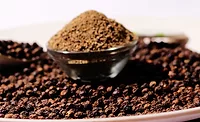Study to Examine Pathogens in Low-Moisture Foods

Low-moisture foods, which are often considered ready-to-eat, cause hundreds of foodborne illness cases each year. One University of Arkansas professor aims to investigate the microbiological risks of low-moisture foods and improve low-moisture food safety.
Jennifer Acuff, assistant professor in food safety and microbiology with the University of Arkansas System Division of Agriculture, was recently awarded a $200,000 grant from the U.S. Department of Agriculture National Institute of Food and Agriculture to study how bacteria persist in low-moisture food processing environments. According to Acuff, there is a dearth of knowledge regarding how much water and nutrients are required to sustain pathogen populations, but it is obvious that pathogens can persist in dry foods for a long time.
With the two-year grant, Acuff hopes to simulate “persistent populations” to study how to prevent their formation, as well as to explore how to mitigate risk once pathogens do appear in a low-moisture food processing environment. Acuff will observe cross-contamination between “persistent populations” and non-contaminated foods when minimal water and nutrients are present. The study will also identify a non-pathogenic microorganism that can mimic pathogenic behavior, in order for food processing plants to validate the laboratory results without risk.
Acuff states that maintaining hygiene in low-moisture food processing facilities is difficult due to restrictions around using water. Since introducing moisture to a dry-foods processing environment can foster or perpetuate pathogen populations, dry food processors are in need of cleaning and sanitization methods that do not involve water. Results from the study will inform recommendations to processors for improving low-moisture food safety, as well as allow for future collaborative research on cleaning, sanitizing, and processing in low-moisture environments.
Looking for quick answers on food safety topics?
Try Ask FSM, our new smart AI search tool.
Ask FSM →









